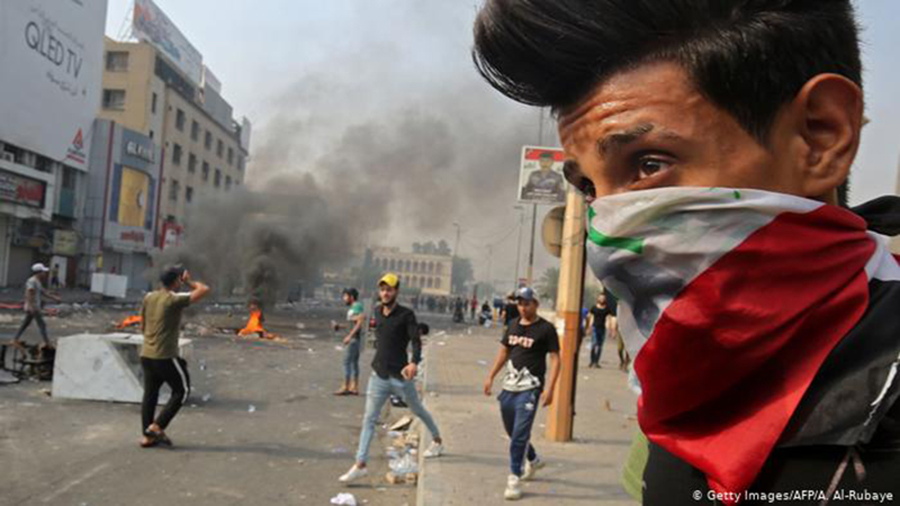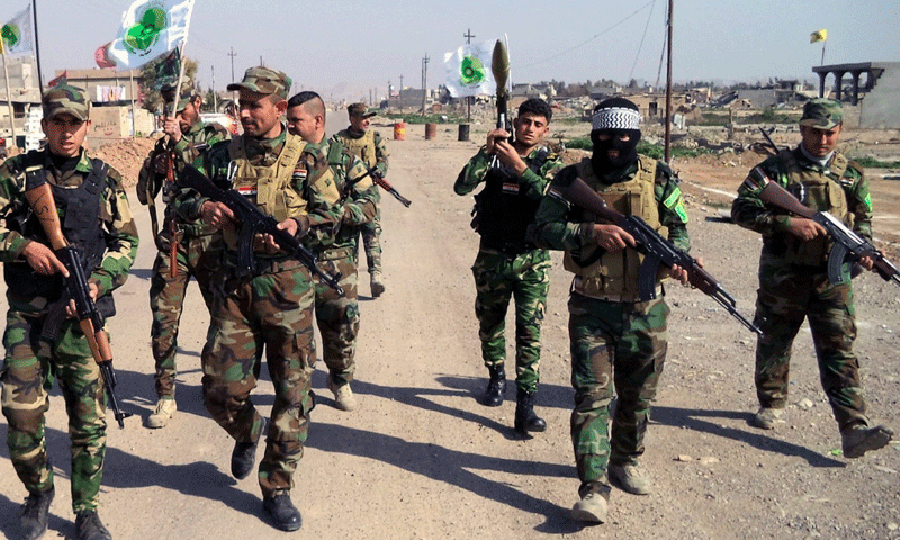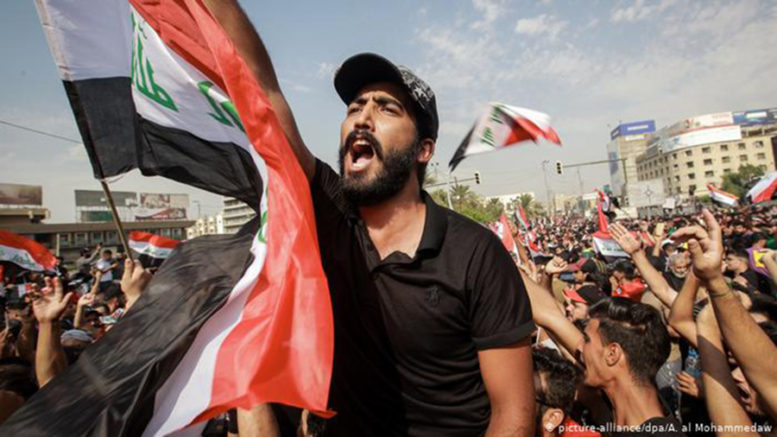Contributed from Victoria
At least 300 people have been killed in Iraq’s unrest, as security forces repeatedly use force to break up protest that have continued for more than a month.
Although the protest began to demand more jobs and better government services, this quickly scaled up to demand a new constitution and an ernd to the current political system.
There is also more going on here than at first meets the eye. The events taking place cannot be separated from the nation’s factional politics.
At the heart of it, remains the legacy of the 2003 led invasion, which established a political structure institutionalising governments of competing factions, motivated by narrow self interests.
A montster that has ensured ongoing instability and generated rampant corruption had been created.
The current unrest can be traced back to the demotion of lieutenant General Abdulwahab al-Saadi in September. Although the roots are far deeper, this was the trigger. Next came the attacks in the Diwaniyah Badr Organisation office and buildings belonging to the Popular Mobilisation Forces and government by a rival militia loyal to the earlier Moqtada al-Sadr government , in early October.

Popular Mobilisation Forces leading commander Wissam al-Alyawi was killed during these attack. This did a great deal to raise the political temperature and set the scene for an escalation of violence and brutal state repression.
Matthew Tueller the US ambassador to Iraq, sent a cable to American military leaders on 6 October, in which he referred to the role played by former prime minister Moqtada al-Sadr, in taking advantage of growing unrest. Sadr is especially close to the United States.
The present government led by prime minister Adel Abdul Mahdi is a broad coalition, where political parties that have relationships with Iran play a prominent role, including the the Popular Mobilisation Forces, which holds the biggest block of parliamentary seats, is the most important pro Iranian block.
Thus, Iraq has a government has shifted from alliance with the United States and close to Iran. This has given cause for the United States to respond by becoming more involved, give its backing to the protests and position the factions loyal to Al-Sadr within the protest movement.
In response, the Popular Mobilisation Forces have accused the United States and Israel of involvement in the unrest.

Most of those on the streets are from the Shia community, and most, belong to the upper and middle class. There is almost no involvement from the Suni, Kurdish and other communities. This lends credibility to the claim that behind the unrest and foreign involvement, lies the rivalry between the Shia factions of the political elite.
This is one big reason why Mahdi’s effort to placate the discontented with promises to investigate the deaths, release detainees, work towards reforming the constitution and eventually calling a new election has come to nothing.
Despite the complexities, it remains that Iraq does need major change and that getting rid of the constitution imposed in 2003 and putting a new one in place remains a necessity. There is justice in this demand.
The question is, what will this be replaced by? Political institutions that overcome the power of the factional elites or a constitution that replaces one with the other?


Be the first to comment on "Iraqi’s protest movement and foreign interference"